Related Research Articles

The First Ecumenical Council of the Vatican, commonly known as the First Vatican Council or Vatican I, was the 20th ecumenical council of the Catholic Church, held three centuries after the preceding Council of Trent which was adjourned in 1563. The council was convoked by Pope Pius IX on 29 June 1868, under the rising threat of the Kingdom of Italy encroaching on the Papal States. It opened on 8 December 1869 and was adjourned on 20 September 1870 after the Italian Capture of Rome. Its best-known decision is its definition of papal infallibility.
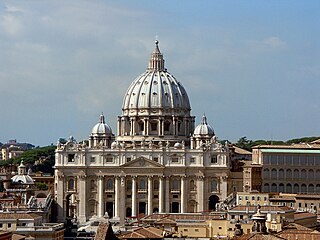
The Second Ecumenical Council of the Vatican, commonly known as the Second Vatican Council or Vatican II, was the 21st and most recent ecumenical council of the Catholic Church. The council met in Saint Peter's Basilica in Vatican City for four periods, each lasting between 8 and 12 weeks, in the autumn of each of the four years 1962 to 1965, although it had been anticipated initially that the work of the Council would have been complete after three sessions.
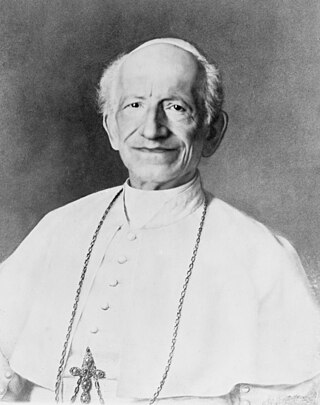
Pope Leo XIII was head of the Catholic Church from 20 February 1878 until his death in July 1903. Living until the age of 93, he was the oldest pope, whose age can be validated, holding office and had the fourth-longest reign of any pope, behind those of Peter the Apostle, Pius IX and John Paul II.

In the Catholic Church, the Dicastery for the Causes of Saints, previously named the Congregation for the Causes of Saints, is the dicastery of the Roman Curia that oversees the complex process that leads to the canonization of saints, passing through the steps of a declaration of "heroic virtues" and beatification. After preparing a case, including the approval of miracles, the case is presented to the pope, who decides whether or not to proceed with beatification or canonization.

A papal conclave is a gathering of the College of Cardinals convened to elect a bishop of Rome, also known as the pope. Catholics consider the pope to be the apostolic successor of Saint Peter and the earthly head of the Catholic Church.

The papal conclave held from 31 July to 4 August 1903 saw the election of Cardinal Giuseppe Melchiorre Sarto to become pope in succession to Leo XIII, who had died on 20 July after a 25-year-long pontificate. Some 62 cardinals participated in the balloting. Emperor Franz Joseph of Austria asserted the right claimed by certain Catholic rulers to veto a candidate for the papacy, blocking the election of the leading candidate, Cardinal Secretary of State Mariano Rampolla. Sarto was elected on the seventh ballot and took the name Pius X.

In the papal conclave held from 14 to 16 June 1846, Giovanni Maria Mastai Ferretti, Bishop of Imola, was elected on the fourth ballot to succeed the recently deceased Gregory XVI as pope. He took the name Pius IX. Of the 62 members of the College of Cardinals, 52 assembled in the Quirinal Palace, one of the papal palaces in Rome and the seat of two earlier 19th century conclaves. The conclave was the last to elect a ruler of the Papal States, the extensive lands around Rome and Northern Italy which the Catholic Church governed until 1870.
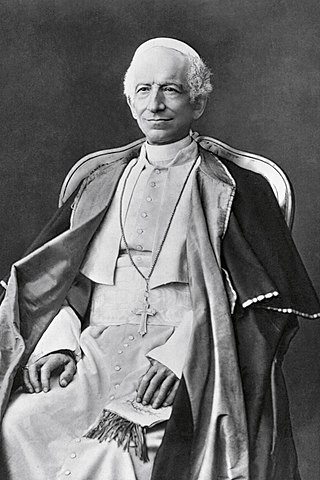
The papal conclave held from 18 to 20 February 1878 saw the election of Vincenzo Pecci, who took the name Leo XIII as pope. Held after the death of Pius IX, who had had the longest pontificate since Saint Peter, it was the first election of a pope who would not rule the Papal States. It was the first to meet in the Apostolic Palace in the Vatican because the venue used earlier in the 19th century, the Quirinal Palace, was now the palace of the king of Italy, Umberto I.

The Italian Catholic Church, or Catholic Church in Italy, is part of the worldwide Catholic Church in communion with the Pope in Rome, under the Conference of Italian Bishops. The pope serves also as Primate of Italy and Bishop of Rome. In addition to the Italian Republic, two other sovereign states are included in Italian dioceses: San Marino and Vatican City. There are 225 dioceses in the Catholic Church in Italy, see further in this article and in the article List of Catholic dioceses in Italy.
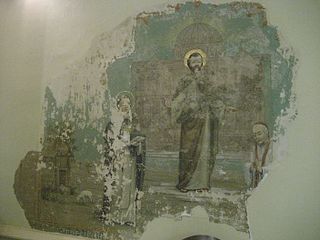
Pastor aeternus was issued by the First Vatican Council, July 18, 1870. The document defines four doctrines of the Catholic faith: the apostolic primacy conferred on Peter, the perpetuity of the Petrine Primacy in the Roman pontiffs, the definition of the papal primacy as a papal supremacy, and Papal infallibility – infallible teaching authority (magisterium) of the Pope.

The Diocese of Caiazzo is a former Roman Catholic ecclesiastical territory in the province of Caserta, southern Italy, abolished in 1986, when it was united into the Diocese of Alife-Caiazzo. It was a suffragan of the archdiocese of Capua.

The Italian Catholic diocese of Monopoli, in the province of Bari, existed from the eleventh century to 1986. In that year it was united into the diocese of Conversano-Monopoli.
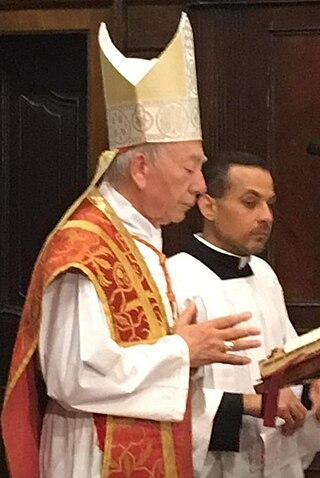
Francesco Coccopalmerio is an Italian cardinal. He was president of the Pontifical Council for Legislative Texts from his appointment by Pope Benedict XVI on 15 February 2007 until his resignation was accepted by Pope Francis on 7 April 2018. He spent his early years in the Archdiocese of Milan and became an auxiliary bishop in 1993. He moved to the Roman Curia in 2000.

The Diocese of Alife-Caiazzo is a Latin diocese of the Catholic Church in Campania, southern Italy, created in 1986. In that year the historic Diocese of Alife was united with the Diocese of Caiazzo. The diocese is a suffragan of the Archdiocese of Naples.
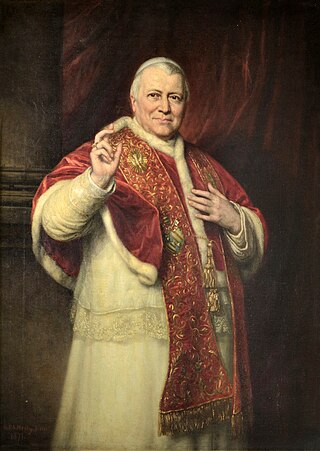
Papal infallibility is a dogma of the Catholic Church which states that, in virtue of the promise of Jesus to Peter, the Pope when he speaks ex cathedra is preserved from the possibility of error on doctrine "initially given to the apostolic Church and handed down in Scripture and tradition". It does not mean that the pope cannot sin or otherwise err in some capacity, though he is prevented by the assistance of the Holy Spirit from issuing heretical teaching even in his non-infallible Magisterium, as a corollary of indefectibility. This doctrine, defined dogmatically at the First Vatican Council of 1869–1870 in the document Pastor aeternus, is claimed to have existed in medieval theology and to have been the majority opinion at the time of the Counter-Reformation.

Luigi Bettazzi was an Italian prelate of the Catholic Church who was bishop of Ivrea from 1966 to 1999. One of the youngest and most junior participants in the Second Vatican Council, he was one of the original signatories of the Pact of the Catacombs.
In the Catholic Church, the Synod of Bishops, considered as an advisory body for the pope, is one of the ways in which the bishops render cooperative assistance to him in exercising his office. It is described in the 1983 Code of Canon Law as "a group of bishops who have been chosen from different regions of the world and meet at fixed times to foster closer unity between the Roman Pontiff and bishops, to assist the Roman Pontiff with their counsel in the preservation and growth of faith and morals and in the observance and strengthening of ecclesiastical discipline, and to consider questions pertaining to the activity of the Church in the world."
The Diocese of Vico Equense was a Roman Catholic diocese located in the coastal town of Vico Equense in the Metropolitan City of Naples, in Italy. It was suppressed in 1818 to the Archdiocese of Sorrento. It is now included in the Catholic Church's list of titular sees.
Luigi Riccio was a Roman Catholic prelate who served as Bishop of Vico Equense (1627–1643).
References
- ↑ Vatican Council , as it appeared in the 1913 Catholic Encyclopedia
- ↑ Caiazzo, Michael and Monika K. Hellwig. "The Modern Catholic Encyclopedia", 2004
- ↑ "Bishop Luigi Riccio [Catholic-Hierarchy]".